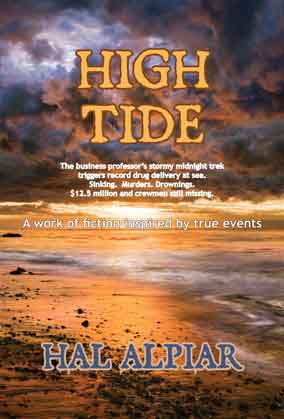Dec 07 2011
Swimming Upstream?
The question that haunts business owners in desperate times–
Are you making the sale
. . . or making a customer?
Cultivating relationships among others with whom you have no shared interests –especially in this day of technology-induced dwindling relationships and global economic demise– is harder, takes more time, and is often distasteful. But does swimming upstream pay?
The more needy you are financially, the greater the temptation to make the sale and run, regardless of the prospects that holding out now can prompt a repeat (sometimes bigger) performance further down the road. “There is no road,” you might say, “It’s now or never! I have bills to pay. I need the money now!”
If it’s a matter of food on the table for your family tonight, you’d better go for the sale, and should probably be looking for some other work as well. But small business survival tactics really must revolve around the customer, prospective customer, and employees.
I stopped in a small hardware store looking for a kitchen faucet wand, and hoping to get a plumber referral at the same time. The store was busy, but I was greeted by a young man with a genuine smile and eye contact at the front door who asked if there was anything specific I was looking for.
I waved my broken wand. He laughed and said, “I’m sorry we can’t help you with that, but I’m sure you can find one at the big home center up the road. Ask for Joe in plumbing. Is there anything else you need today?” I said that once I found the part, I’d be looking for a local plumber to install it.”
He called the owner over and paraphrased what I’d said. The owner asked if I’d be okay with a very competent older man, a retired plumber who likes to keep active doing small projects like this, and would be very inexpensive.
Who could say no? He went to his contractor book, then the phone book, looked up the name, wrote it on a piece of paper with the man’s number and told me when might be the best times to call. “He’s been coming in here for years, but he never left a number. Anything else we can do for you today?”
I went to the big home center, got the part, found another plumber in the meantime, but returned to the little hardware store with the proceeds of a broken piggy bank. I spent a lot of money on products I needed that would have been 15% cheaper at the big home center up the road.
When you train your people personally and teach them how important every customer and prospect encounter is every day, how customer relationships pay the bills (including their salaries) and all it takes is knowing that everyone has something in common with everyone else, and finding that something is the challenge.
It’s both the challenge and the opportunity.
And all it takes to make it work is to invest something of your self. Is this true of marriage? Family life? Teams? Hobbies? Friendships? Community organizations? Neighborhoods? Certainly it’s true in every work setting — office, truck, computer station, basement, showroom, hospital, or factory floor.
Return On Investment odds increase proportionately with the quality and amount of effort you’re willing to put in.
Every prospect stands before you wanting to become a customer. Why else would she or he be there? Every customer wants to be a loyal return customer because having a sense of security and reassurance (TRUST in the seller) is half the sale.
# # #
FREE blog subscription: Posts RSS Feed
Hal@Businessworks.US 302.933.0116
Open Minds Open Doors
Many thanks for your visit and God Bless You.



